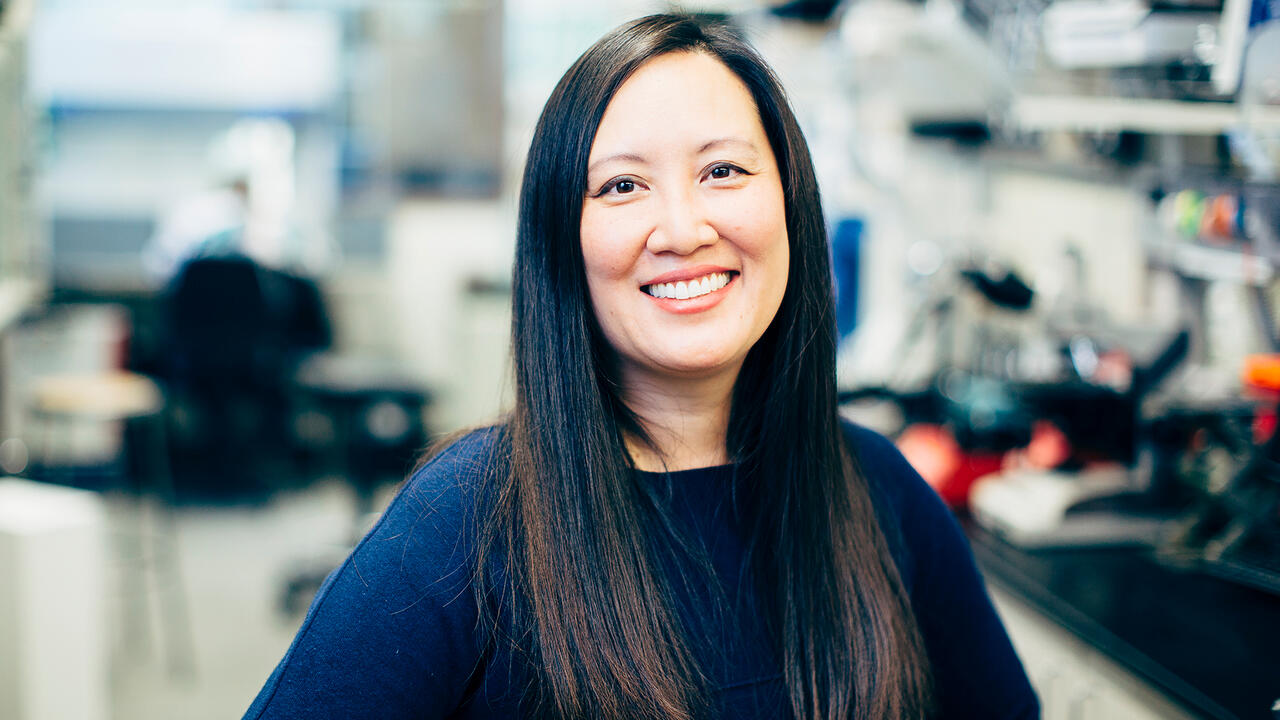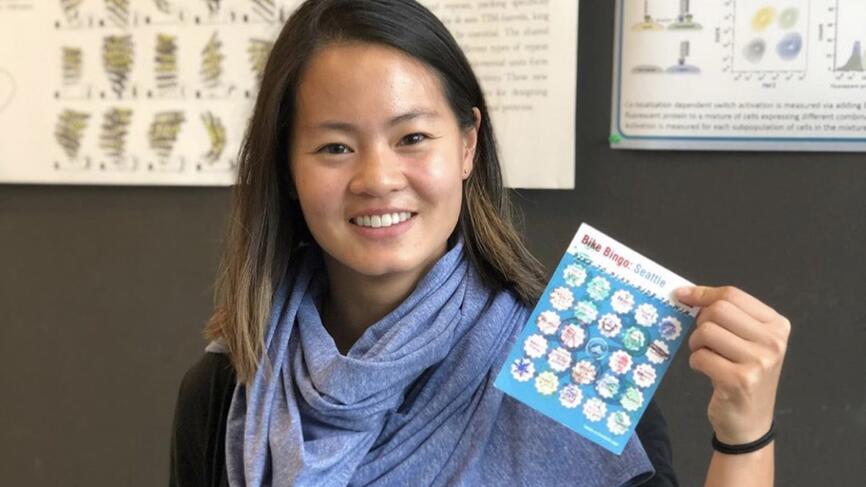
Wellesley Alumnae Are Working on COVID-19 Drug Approval, Vaccine, and Virus Research
“This is an incredible moment for science,” wrote Erin Yang ’16, a graduate student at the University of Washington, as part of a Reddit “Ask Me Anything” (AMA) session in early April about coronavirus vaccine research. “All hands are on deck, moving quickly but safely.”
Across the country, Wellesley alumnae like Yang are working on the front lines of COVID-19 research in areas such as drug approval, vaccines, and discovering more about the virus itself.
Yang, a protein engineer at the university’s Institute for Protein Design, and her colleagues from the institute answered questions from the public in the AMA in a thread with over 250 comments, discussing progress in vaccine development and more. In the lab, Yang creates new protein nanoparticles with structural features needed by drug delivery vehicles and vaccine therapies, such as a coronavirus vaccine. She and her coworkers in the lab are testing the “vaccine-ability” of her nanoparticles and others.
Yang didn’t pursue this path immediately after Wellesley, taking a couple of years after college to decide, “Do I feel like Wellesley prepared me for this work?” “I came into this program behind in terms of knowing techniques that some of my classmates who worked at big R1 universities did every day in their labs,” she said in an email. “Often, the techniques I read about in the papers in grad school, I had to ask someone to show me how to do, no matter how basic they were. While that may seem like a downside, I look at it positively.”

“Wellesley taught me other things—I became curious, I asked questions, I wrote well, I was disciplined, and I was not afraid to ask for help or to speak my mind,” she continued. “And when I entered my lab as a new graduate student, I felt that people were willing to teach someone who was a blank slate. I was basically trained in the wet lab by the postdocs in my research lab, but those same postdocs have told me that they can see I am a good scientist, despite my lack of technical skills, which I learned right away.”
In the AMA, Yang addressed a question about the number of current COVID-19 vaccine candidates and where the trials are being conducted. She responded that “a few different vaccine candidates from other groups have entered the earliest stage of clinical testing, and many others are racing to get there. A handful of patients have been injected in Seattle as part of one mRNA vaccine trial (Phase 1).” (The mRNA vaccine trial recently entered Phase 3.)
Vaccine research and development takes a lot of time, Yang wrote in an email, and there are many people working very hard to make it happen: “I am optimistic that with so many groups working on COVID-related research and with communication on Twitter and bioRxiv—an open-source, preprint repository for biological research that helps make science more transparent and accessible—we are learning new things about the virus very quickly.”
On the other side of the country, Dr. Susan Flamm Honig ’79, a medical reviewer on the clinical advisors team of the Office of New Drugs Policy at the Food and Drug Administration in Washington, said she has been working days, nights, and weekends on COVID-19. “The response from the medical and scientific communities has been overwhelming,” she said. “Many approved drugs have been re-evaluated for activity against the virus, and the FDA has created a process for streamlining and expediting clinical trial initiation.”
“The response from the medical and scientific communities has been overwhelming … Many approved drugs have been re-evaluated for activity against the virus, and the FDA has created a process for streamlining and expediting clinical trial initiation.”
Dr. Susan Flamm Honig ’79
Honig is leading a team to determine whether they are complete, then assigning them to a therapeutic review division. In April she told the Wellesley College Alumnae Association, “We started during the last week of March, and we've triaged over 1,000 inquiries in these unimaginable circumstances.”
Connie Chang ’99 is an assistant professor of chemical and biological engineering at Montana State University’s Center for Biofilm Engineering, where she studies population dynamics of bacteria and viruses. In an article in the spring 2020 issue of Wellesley magazine (excerpted here), Chang discussed how amid the COVID-19 pandemic, her lab has been trying to create fast and simple point-of-care devices for health care providers to measure both the virus itself and the antibodies that patients’ bodies may make after they recover from the infection. They are also grappling with fundamental questions like how a CoV might recombine with other viruses and how the human population size during transmission influences viral evolution.
“The overarching goal of my research is to understand heterogeneous populations at the single-cell level,” Chang told the magazine. “I’m interested in how single individuals within a population interact to make a collective whole.” One of her main interests is biofilms: diverse communities of bacteria that grow on surfaces ranging from the inside of an industrial pipe to medical implants.
Her team has been working with collaborators to build bat “organoids-on-a-chip,” which she describes as “mini-organs that you study in a lab.” They extracted cells from bats that are susceptible to SARS-CoV-2 and were growing them into mini organs—namely gut and lung—to study how these organs react to infection. “I’m excited about the new discoveries and exciting science to come that will help mitigate the current pandemic and prevent the next one,” she said.
This is the third part of a series following alumnae leading the response to the COVID-19 pandemic. Our first installment focused on alumnae in health care professions, and our second on alumnae educators. Stay tuned in the weeks to come for more stories from the front lines.



